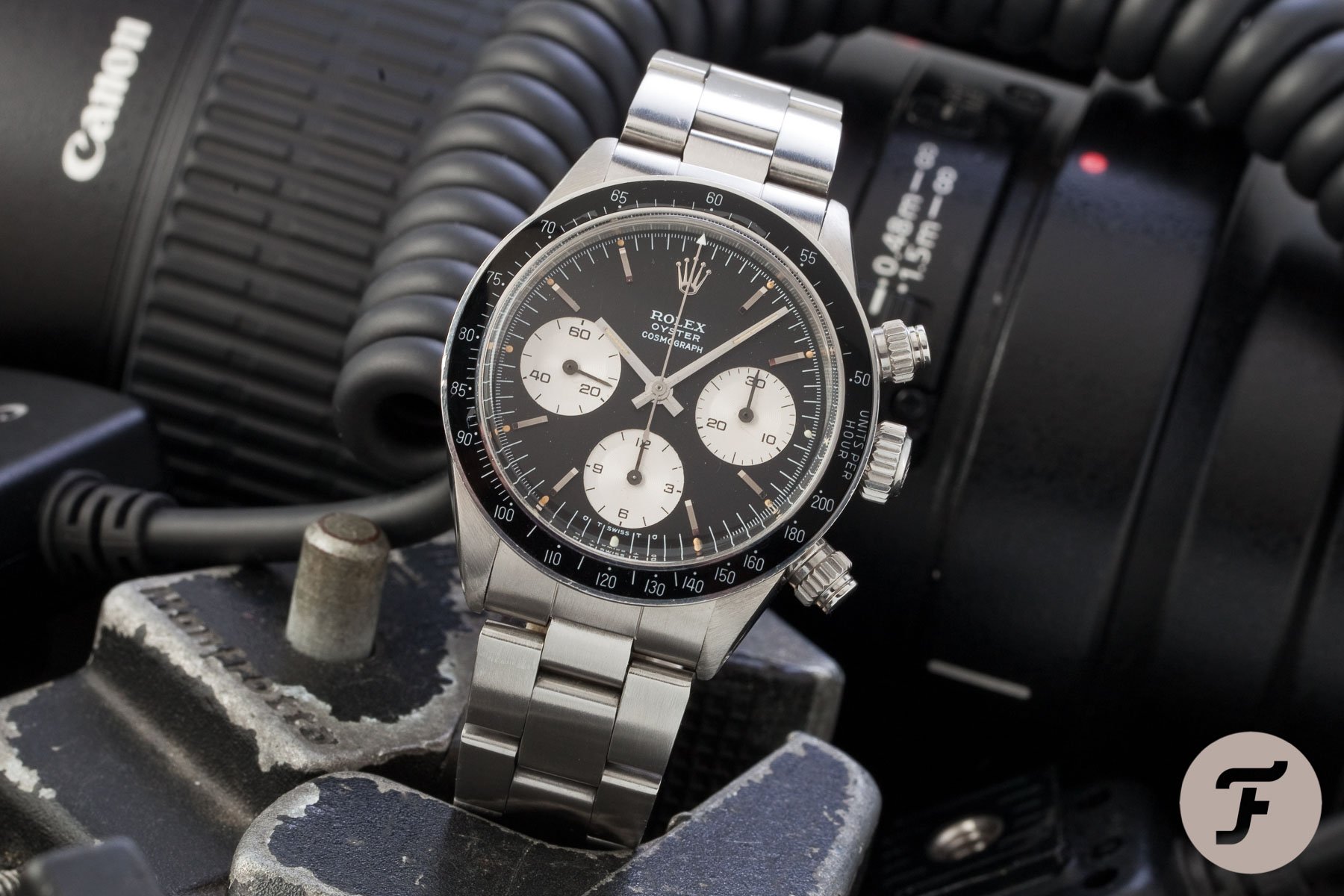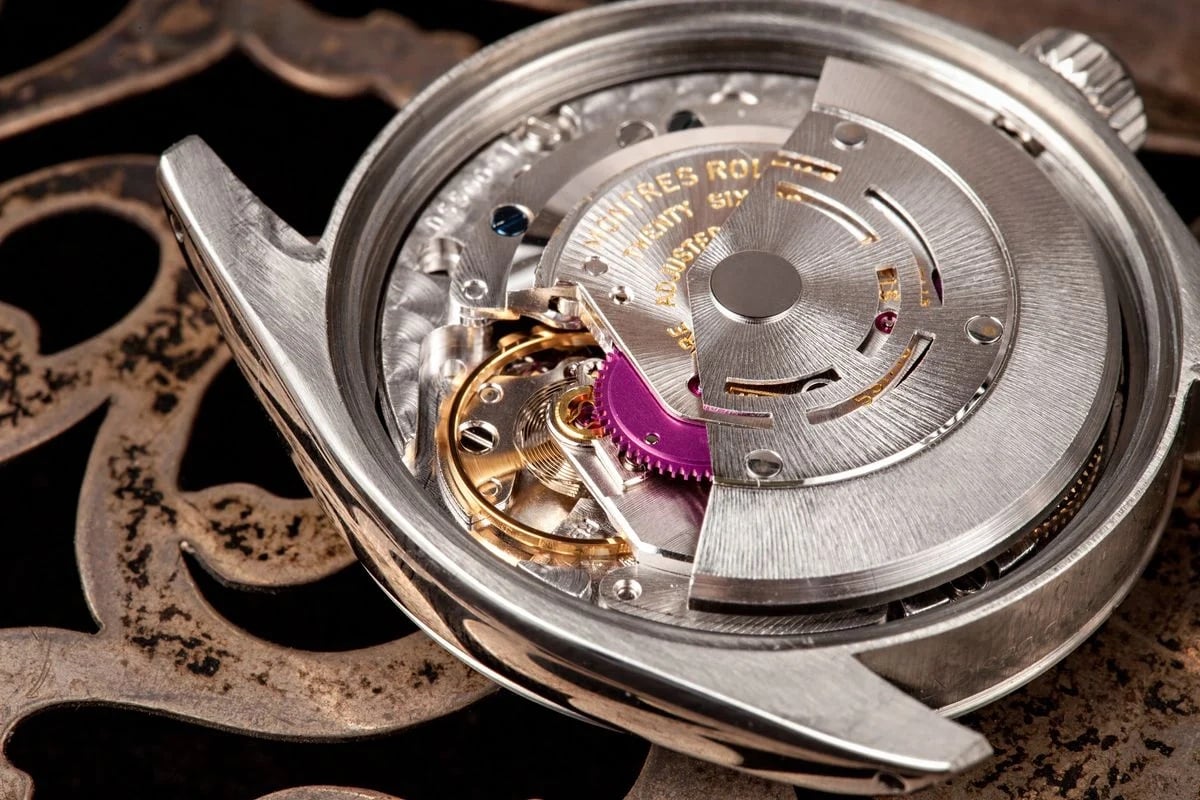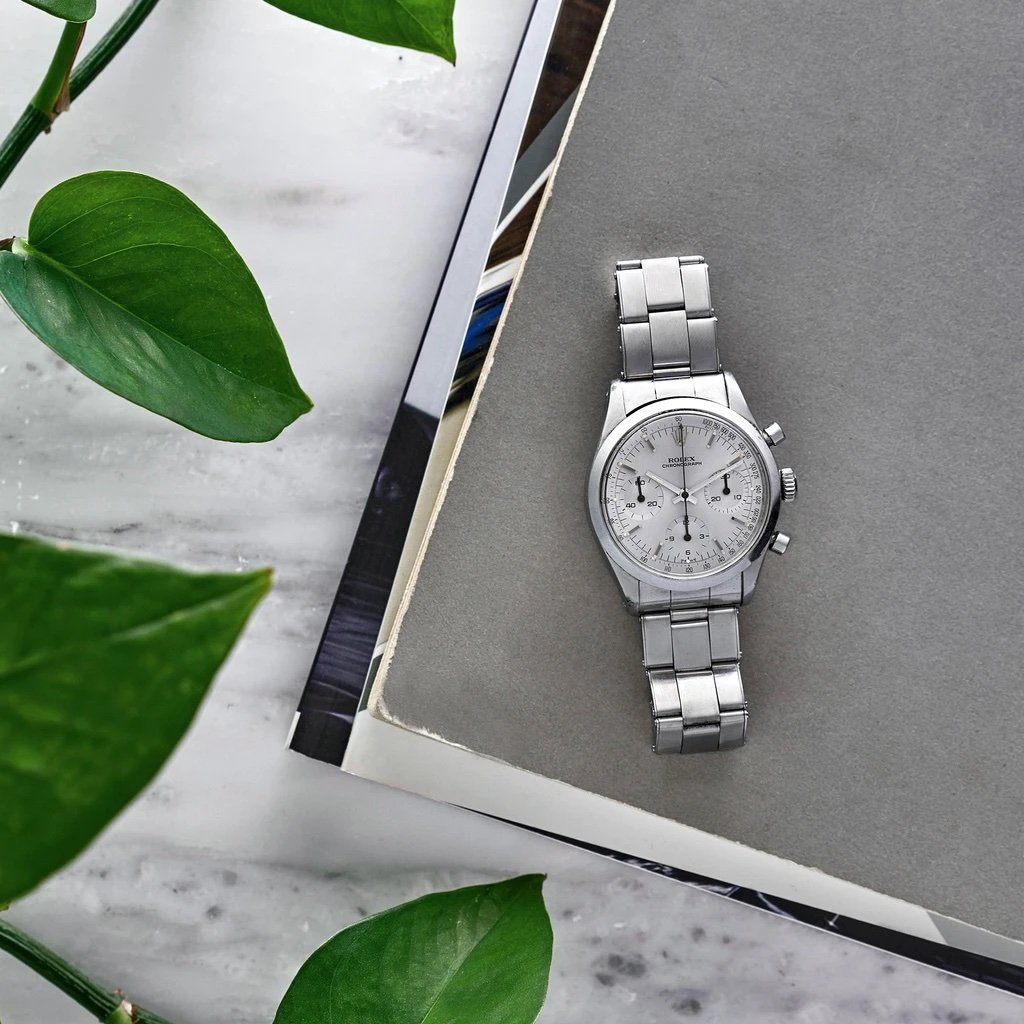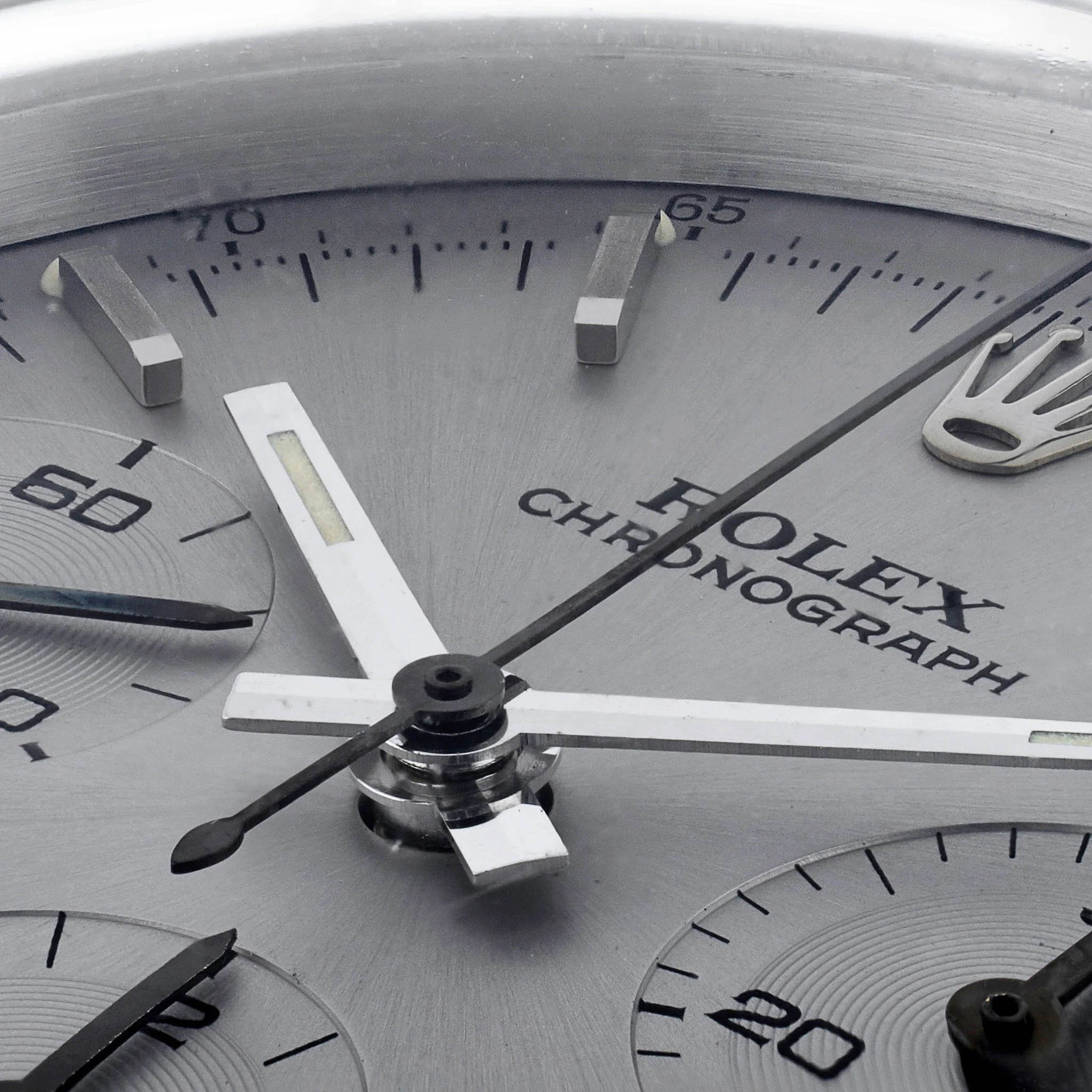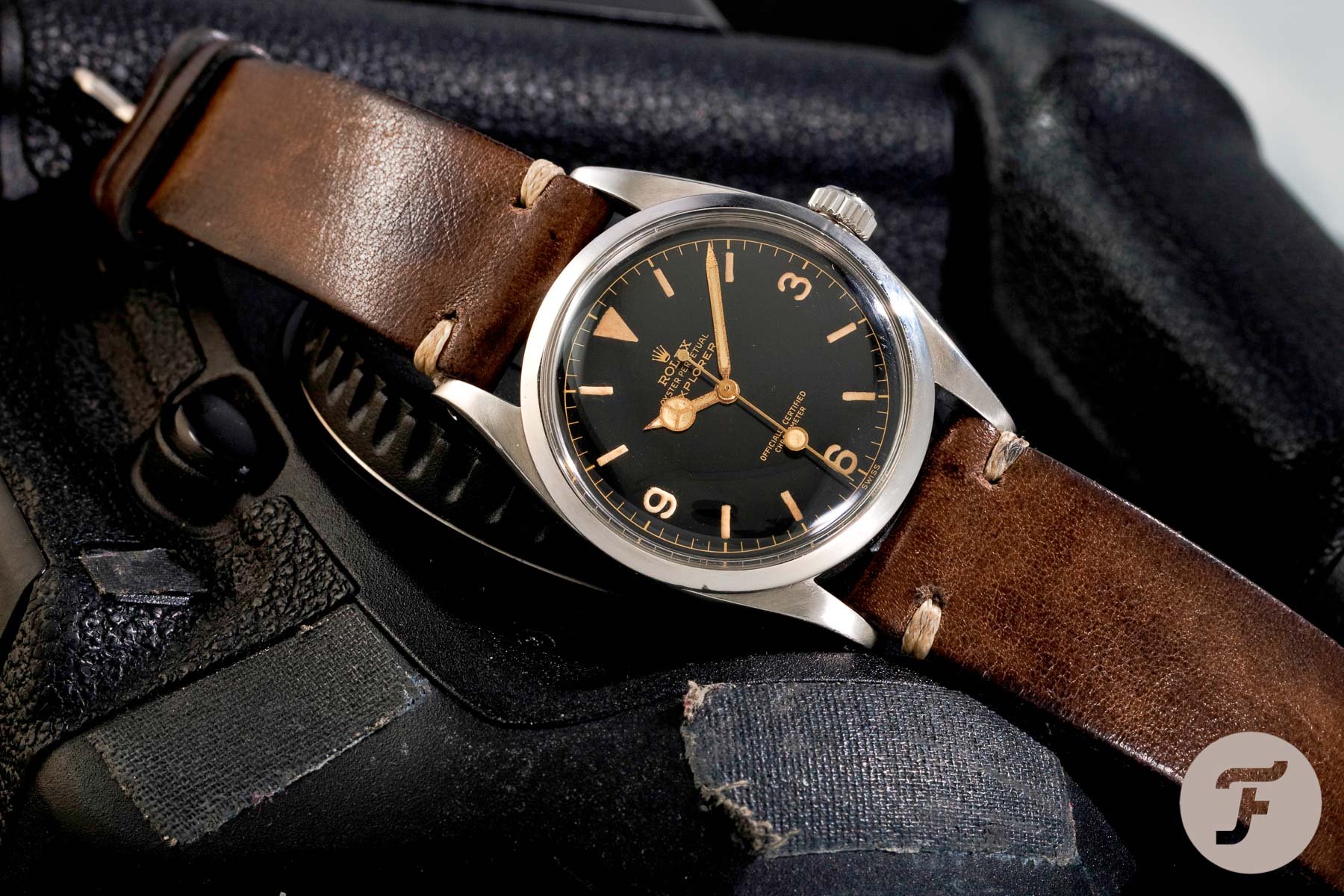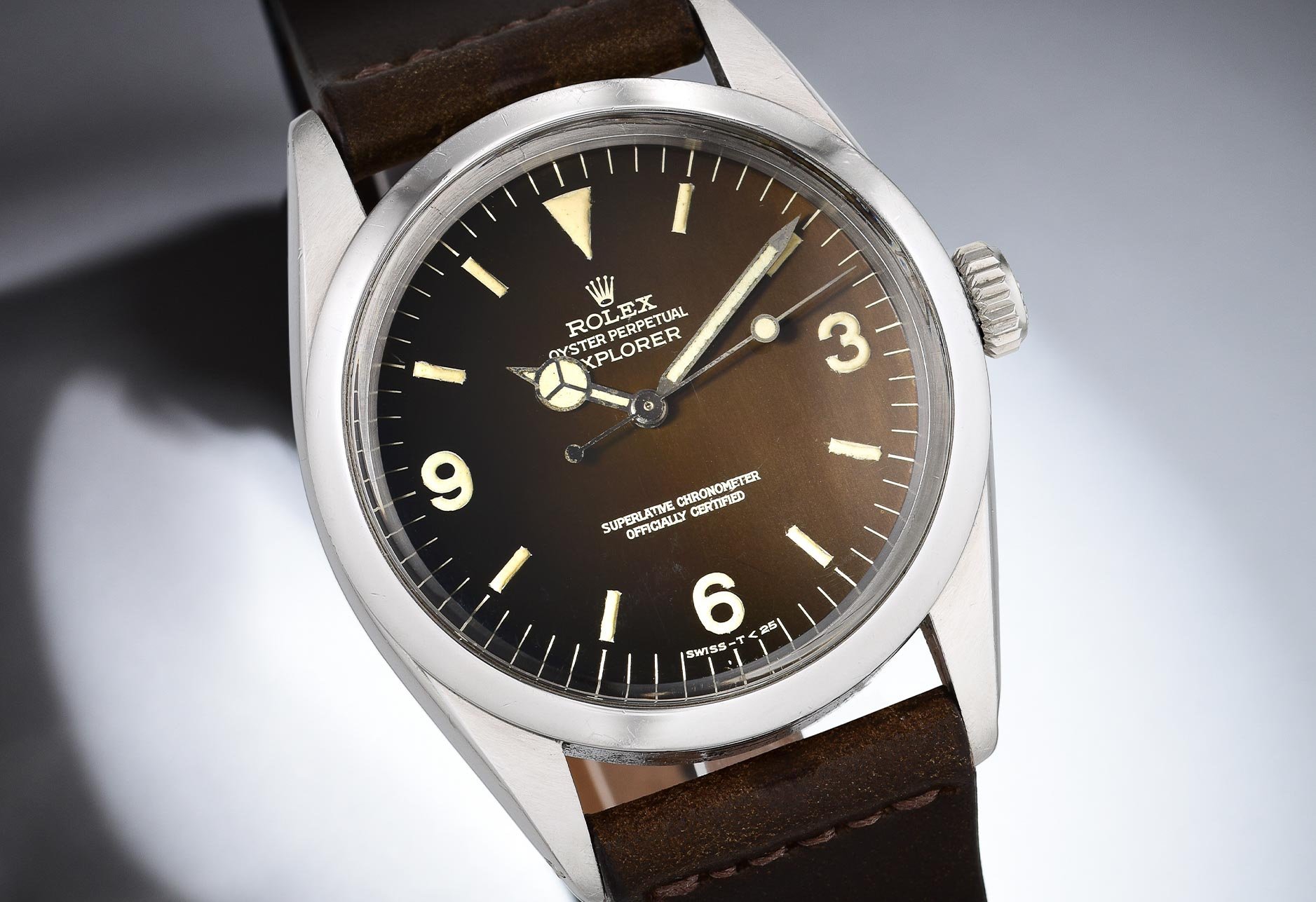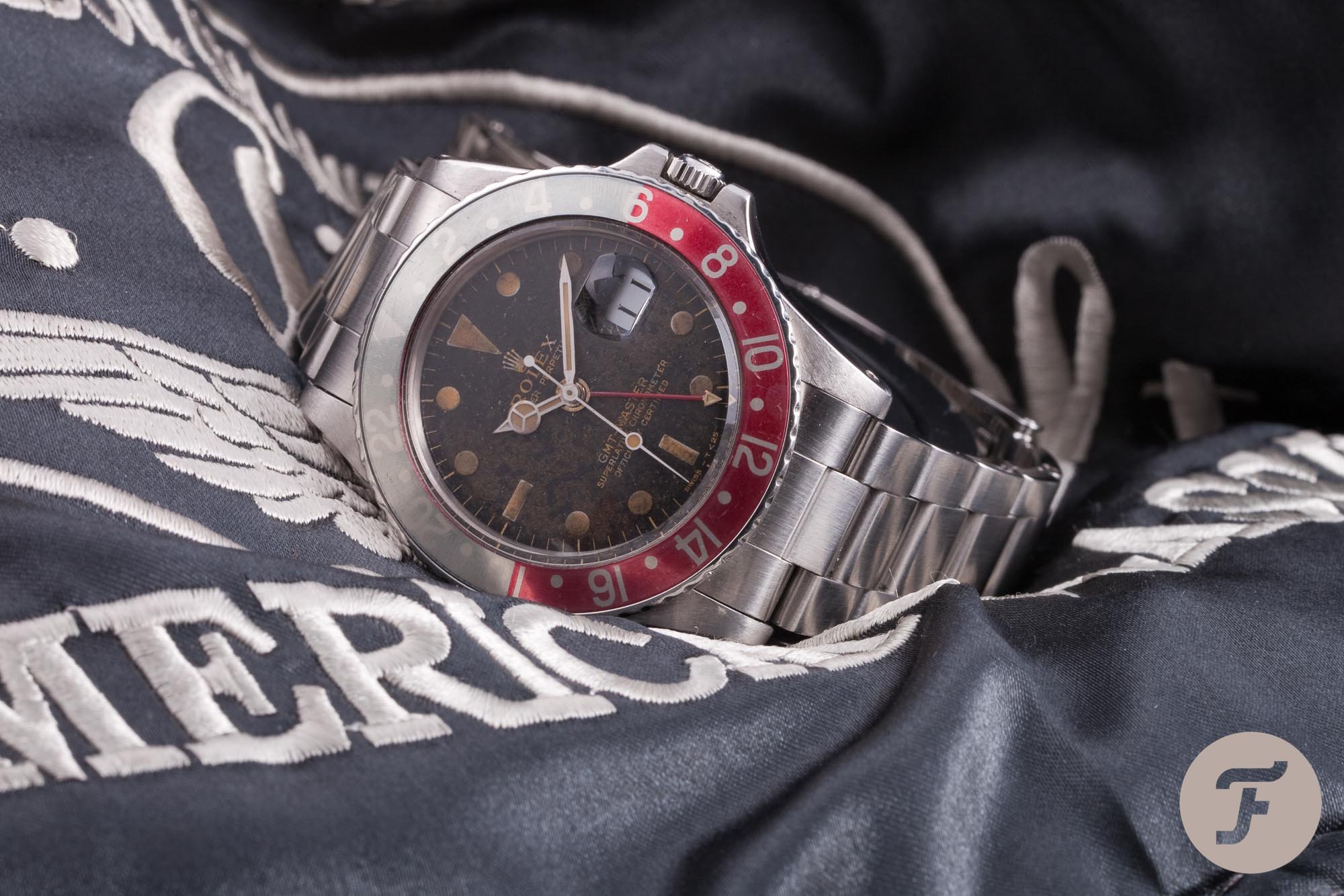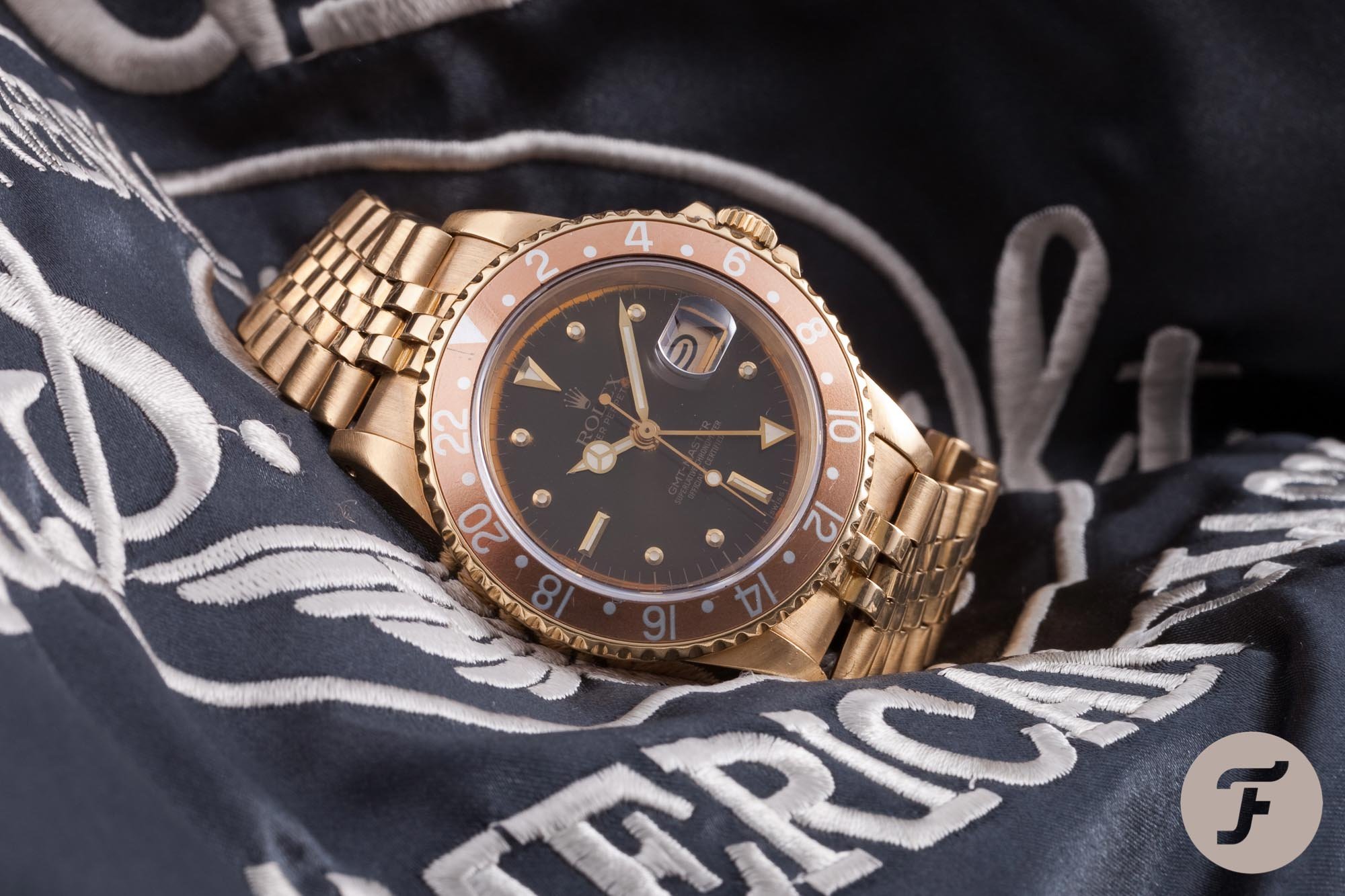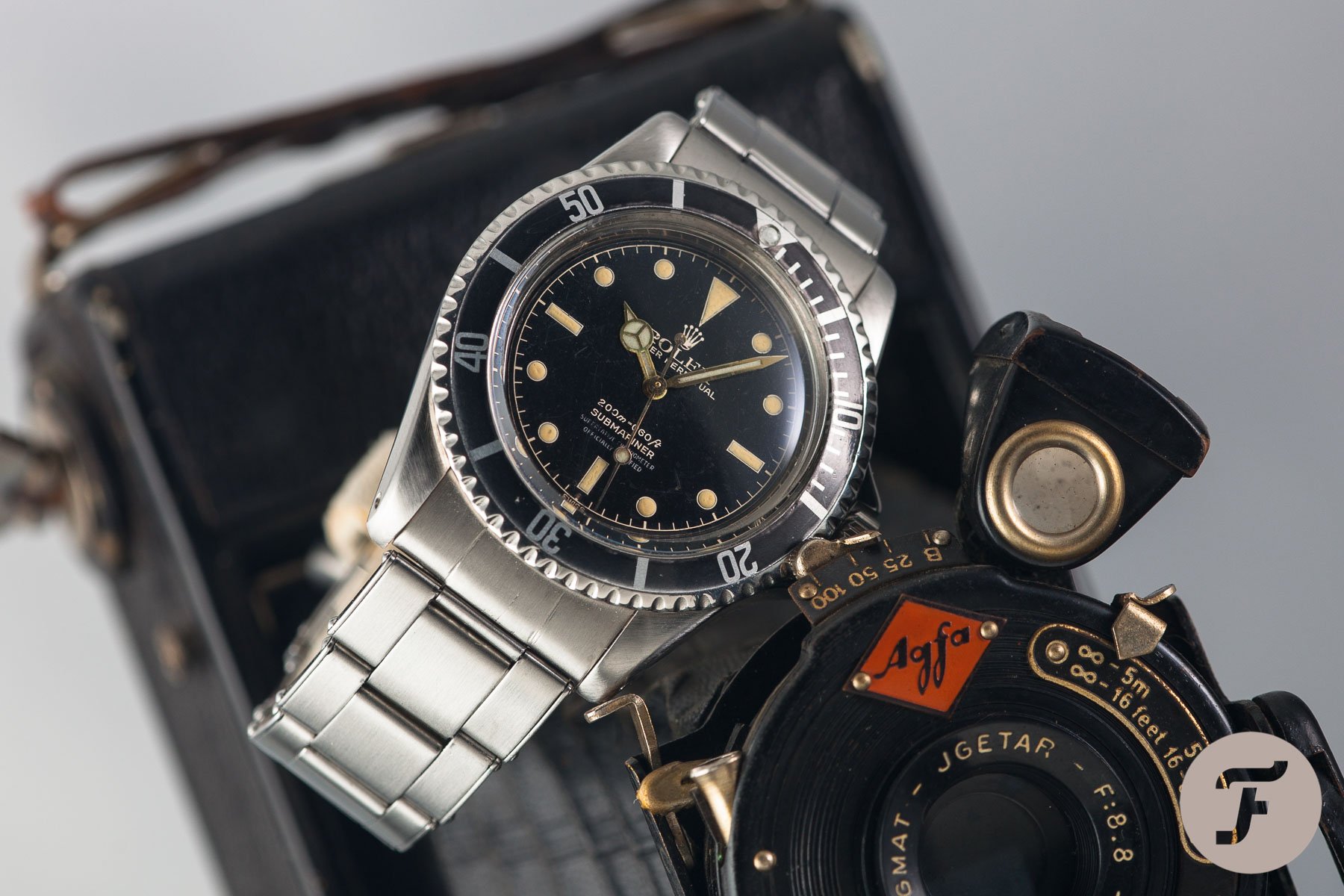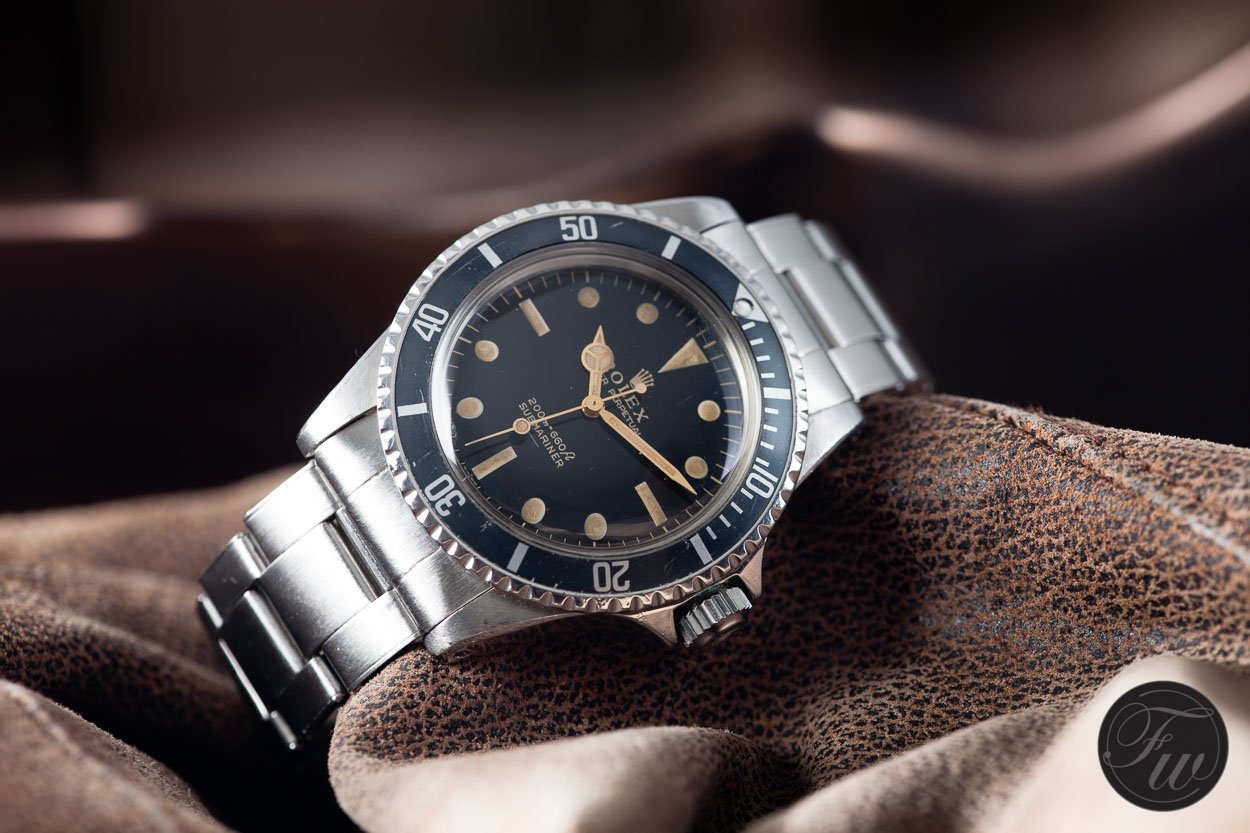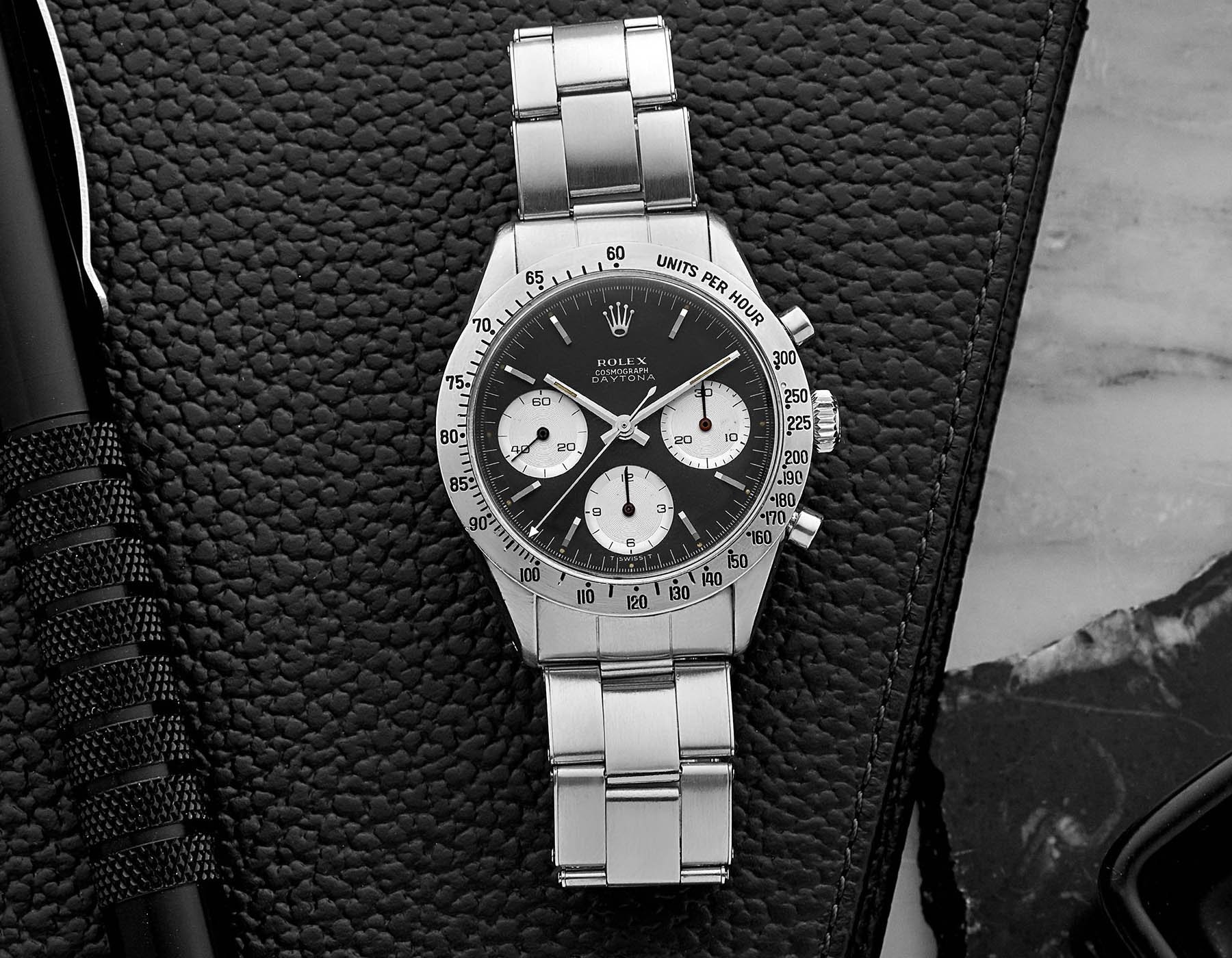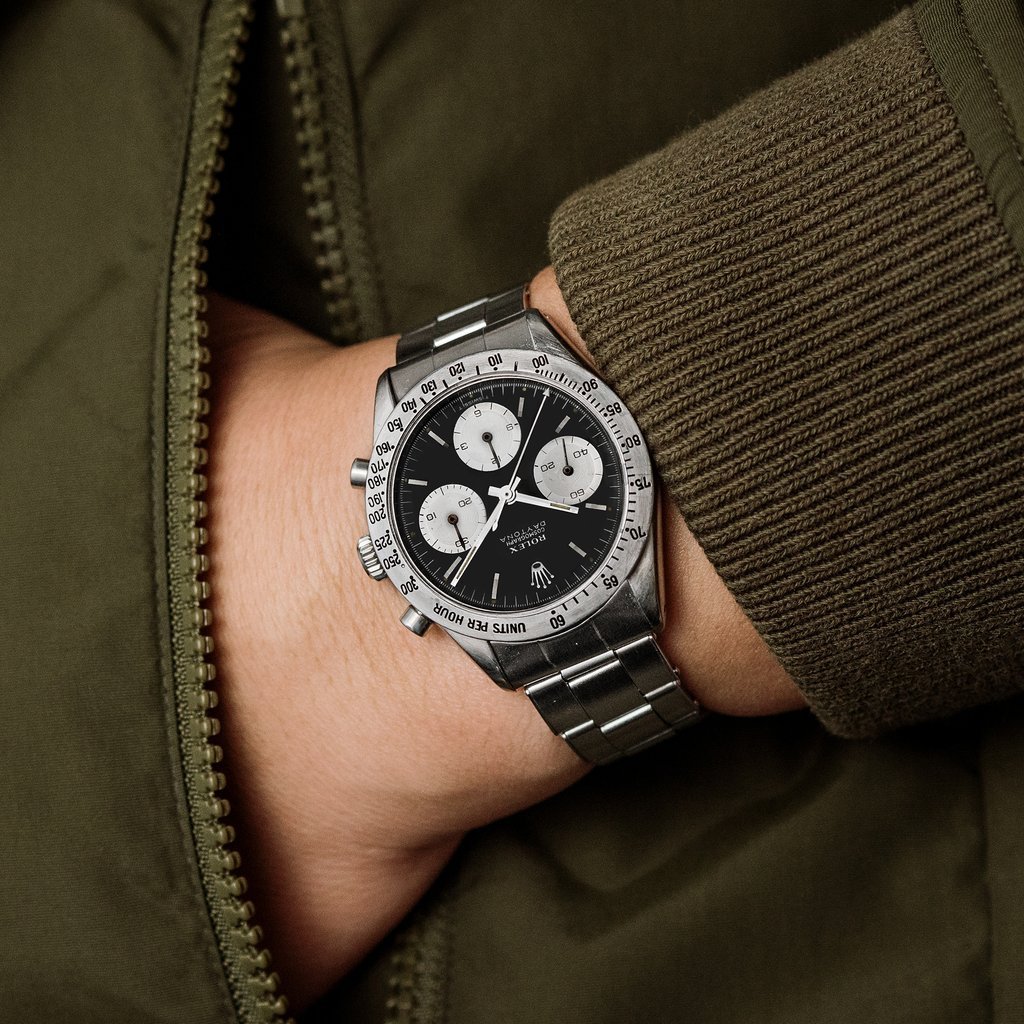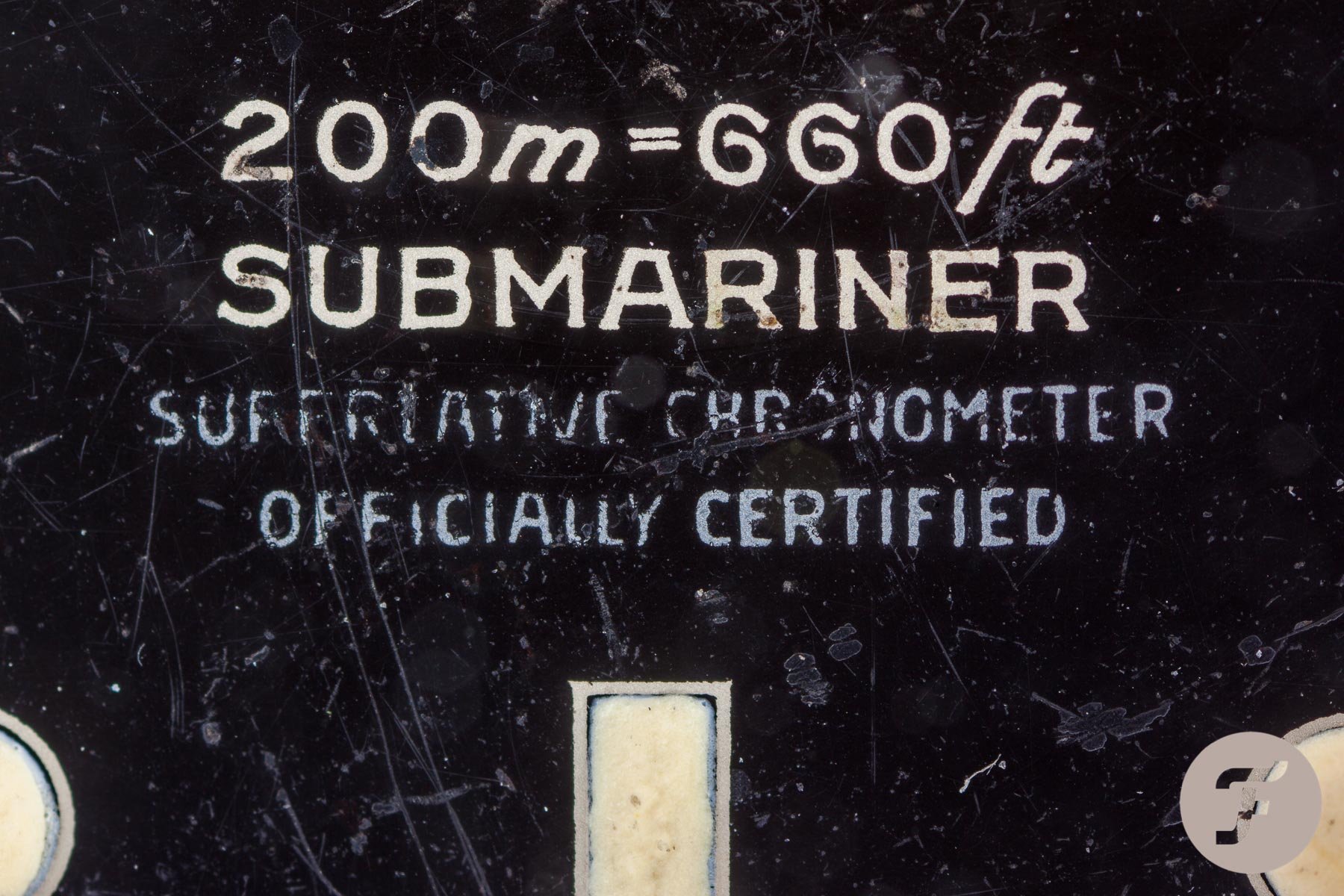Buying Guide: The Best Rolex Watches From The 1960s
We like to talk about vintage watches a lot within the Fratello team. While the daily routine is largely focused on the most recent developments in the world of watches, the most fun for many of us lies in the world of vintage watches. It’s a world full of history, remarkable watches, incredible stories, and quirky details. It inspired us to come up with a series of articles focusing on the best watches per decade from a select group of brands. Some of them priceless, some of them still affordable. But all of them are interesting watches. In this second installment, we will take a look at the best Rolex watches from the 1960s.
This article is the first of a series to cover the most important watches from the 1960s. In the first articles of the series, we focused on the most important watches from the 1950s. The introduction of iconic sports watches in the 1950s triggered a new style of watch that has become the standard of today’s world. Obviously, there are many more brands and watches worth checking out from the 1950s that we haven’t covered. But we want to move on and focus on the design revolution that was sparked by the icons from the 1950s.
In the 1960s we witnessed developments that challenged the status quo of watch design forever. While the 1950s introduced the sports watches next to the dressier timepieces people were used to, the 1960s took that trope to the extreme. The sheer amount of watches that pushed the visual boundaries of what was known and accepted was enormous. On top of that, we also saw great technical developments with the race to produce the first automatic chronograph as the most significant of the decade.
Claiming the crown
This combination of design and technology is also why the 1960s saw so many iconic releases that have become the perfect vintage collector’s pieces. Sometimes you might be able to find a bargain, and sometimes you have to pay a significant amount of money to be able to buy a classic. In this first installment of the best from the 1960s, we will be looking at Rolex so take out your wallets. Rolex hasn’t always been perceived as the watch industry’s leading brand, but the seeds of the industry leader it has become were definitely planted in the ’50s and ’60s.
Picking five of the most remarkable watches Rolex watches from the 1960s is not an easy task. You are going to have to leave things out. Some of the most collectible watches are successors to the models that were introduced in the 1950s, like the Day-Date, the Submariner, and the GMT-Master. On top of that, Rolex introduced the iconic Daytona in the 1960s. And you can already feel where this is going when it comes to finding an affordable option. The harsh reality is that vintage Rolex is hot property, so the word “affordable” is not something that comes to mind for many watch enthusiasts. The best we can do is put that into context for the options you will have within the brand. Enough talk; let’s get going.
The entry-point — Rolex Oyster Perpetual Date ref. 1500
Last week, I actually picked a Datejust as the entry-point. In the 1960s, Rolex introduced the famous Datejust 1600-series with the updated Caliber 1565. It’s a seriously great option if you want to buy a great vintage Rolex as is the Rolex Air-King. Although you have to pull off a 34mm watch as it significantly smaller than what we are used to nowadays. If you can, the Air-King models from the 1960s could be a great option. But my affordable pick is the Rolex Oyster Perpetual Date ref. 1500. This is probably the most affordable vintage Rolex from the 1960s. And it still gets you that typical Rolex design with an Oyster case and a smooth bezel that oozes simplicity and class.
The Cyclops can be quite a distracting feature.
The Oyster Perpetual Date ref. 1500 was introduced in 1962 and had all the familiar tics that we know from the classic Rolex. It is a tad smaller than the Datejust at 34mm but has the same great wrist presence. Now, normally I’m not the biggest fan of the famous Rolex Cyclops. In a design where there is more going on, the Cyclops can be quite a distracting feature. On the ref. 1500, however, it handily takes center stage. The overall design is simple and quiet, and the Cyclops provides just the right amount of zing to keep the watch from becoming a bit boring.
Chronometer certified movements
Production of the Oyster Perpetual Date ref. 1500 ran from 1962 to the late 1970s. Depending on the production year, you will either find an automatic Rolex Caliber 1565 or Caliber 1575 in reference 1500. Rolex started the production with Caliber 1565, and in the mid-sixties, the brand switched to the Caliber 1575. This movement had a higher operating frequency and featured an increased power reserve. But maybe the best feature of both movements is that they were tested and certified as an official chronometer by the Official Swiss Chronometer Testing Institute (COSC). That is something the movements of the Air-King and Oysterdate from the same era did not have. So the Oyster Perpetual Date is a step up in terms of accuracy compared to those models.
The Oyster Perpetual Date looks amazing on a leather strap.
Ref. 1500 came in a variety of materials and executions. By far, the most common is the steel version on an Oyster bracelet with a silver dial. But the watch also came in steel and gold, 18-karat yellow gold, and 18-karat rose gold. Usually, I would tell you to always for a Rolex on a bracelet. The Oyster Perpetual was available on an Oyster bracelet and a Jubilee bracelet. As always with a vintage bracelet, checking the bracelet’s quality is crucial for making this a stunning purchase. Having said that, the Oyster Perpetual Date also looks amazing on a leather strap. If you can pull off a 34mm watch, this could be a perfect watch to start your vintage collection. Because with prices starting at 2.5k for a steel version and max 10k for a full gold version, this is the perfect entry-level vintage Rolex.
My choice — Rolex Chronograph ref. 6238
The Rolex Chronograph ref. 6238 is without a doubt my favorite Rolex from the 1960s. The watch is also known as the “Pre-Daytona” and is the last in a series of Rolex Chronographs from the 1950s and early 1960s that led to the introduction of the famous Rolex Daytona ref. 6239 in 1963. And just looking at the ref. 6238, you can feel the connection to the first Daytona. The watch marks a transition between the looks of the legendary ref. 6234 and ref. 6236 “Jean Claude Killy” and the iconic Daytona. It has a 36mm case and still features a smooth bezel, and has the tachymeter scale printed on the dial like its predecessors.
The updated version is pure vintage Rolex bliss.
The ref. 6238 was produced from 1962 to 1968, and over the course of those six years, 14 different versions were produced. The watch came in stainless steel and 14-karat yellow gold, and 18-karat yellow gold. Rolex started production with dagger hands and a so-called “Transitional Dial” that features dagger indexes and the wording Rolex Oyster Chronograph. After a few years, Rolex updated the watch by introducing baton hands and indexes and simplifying the wording with only Rolex Chronograph on the dial. And that updated version is pure vintage Rolex bliss.
More expensive than a Daytona
The Chronograph ref. 6238 was produced alongside the first Daytona references for a couple of years. However, it wasn’t produced in high numbers. Not at all. Estimates are that between 2,000 and 3,000 pieces of the watch were produced in those six years of production. In those six years, Rolex used two different movements for the watch. The first is the legendary hand-wound Valjoux 72B movement, and the second is the Valjoux 722. When it comes to dials, the most common you will see is the silver dial. On top of that, you will also see the watch with a black dial, grey dial, and sometimes a tropical dial will also pop up.
One that I’d rather have than any Daytona.
And when I say sometimes, I mean rarely. Because of its historical connection to the iconic Daytona, the ref. 6238 has become heavily sought-after. The fact that George Lazenby wore a special version of the watch in On Her Majesty’s Secret Service has also increased its stock. Additionally, the fact that it was only produced in limited numbers makes this a watch to have. But you need some deep pockets to buy one. Before the vintage Daytona prices skyrocketed, reference 6238 was actually more expensive than most of the iconic Daytona references. Nowadays, that has changed, but to buy one, expect to pay anywhere from 35k up to 200k for a steel version with a black dial or one of the gold models. It’s an incredible amount of money, but it will get you an incredible watch. One that I’d rather have than any Daytona.
Money is no object #1 — Rolex Explorer ref. 1016
If you know anything about vintage Rolex watches from the 1960s, you knew this was going to be on the list. The Rolex Explorer ref. 1016 is one of the most iconic Rolex watches ever produced. And it’s also the single Rolex reference that was produced the longest out of all of them. The ref. 1016 was produced for a whopping 27 years from 1963 to around 1989-90. It is the third generation of the Explorer since it was introduced in 1953 — the Pre-Explorer ref. 6150 not included. After the references 6150 and 6350 came reference 6610, and in 1963 Rolex followed that with reference 1016.
The design of the ref. 1016 hardly changed in almost three decades.
What is fascinating to see is that the design of ref. 1016 hardly changed over the course of almost three decades. Sure, the watch has seen several variations, but it has always been the Explorer. The Rolex Explorer is defined by its 36mm steel case, a black dial with the iconic 3-6-9 dial layout with a triangular marker at 12 o’clock, rectangular markers for every other hour, and the characteristic Mercedes hands. And, it goes without saying, the iconic wording Rolex Oyster Perpetual Explorer on the dial. All of them were produced with that same iconic reference number, and all of them have contributed to the legendary status of reference 1016.
The greatest legacy
The initial version introduced in 1963 was a step up from its predecessor in a few ways. The most important change compared to the ref. 6610 is the increased water resistance from 50 meters to 100 meters. As Mike explained in his article about the ref. 1016, this was achieved by a thicker domed acrylic crystal and a (cross-sectionally) round case back gasket. Up until 1967, Rolex produced the ref. 1016 with the automatic winding Rolex Caliber 1560. In 1965 the brand introduced Caliber 1575 for the Explorer, which hung around until ref. 1016 was replaced by its successors in the early nineties.
The late 1980s models are often hard to find.
When it comes to vintage watches, the oldest models of a reference that was in production for a long time are often also the most expensive. They are the oldest and therefore the most difficult to find in good condition. With the Rolex Explorer ref. 1016 there is the strange situation that the late 1980s models are often hard to find and really expensive. It makes sense, though, because finding one of the last generations of the ref. 1016 is essentially buying the most modern version of an iconic reference. As you would expect, the production techniques in the late 1980s were a lot better than in the mid-1960s. It’s why the last-generation models start at higher prices.
Overall prices for a ref. 1016 start at roughly 10k and move up quickly to several tens of thousands for one in great condition. That’s a lot of money for a relatively simple watch. Looks can be deceiving, though. Not only is the Rolex Explorer ref. 1016 iconic reference produced for a long time, it’s also forever connected to stories of conquering the highest mountains on our planet.
Money is no object #2 — Rolex GMT-Master ref. 1675
I love the Rolex GMT-Master 1675 the most as my future vintage daily wear our of all the GMT-Masters. In the article discussing the best Rolex watches from the 1950s, I explained that the first generation GMT-Master ref. 6542 is my favorite vintage Rolex. But you need that in good condition with a pristine bakelite bezel insert to really appreciate it for what it is. The opposite is true for ref. 1675. I love it because it is the only vintage Rolex I love when it has been completely beaten down. There is no other Rolex that has the same charm and presence as the GMT-Master ref. 1675 worn down by decades of being worn. Just look at the images to see what I mean.
The second generation GMT-Master was produced all the way up to 1980.
The GMT-Master ref. 1675 is also one of those references that were produced for a long time, like the Explorer ref. 1610. Ref. 1675 was introduced in 1959, so technically, it should have been in our previous list of the best Rolex watches from the 1950s. But it’s tough to find a ref. 1675 from the fifties, whereas there are plenty from the sixties on offer. It’s the decade that contributed the most to its legacy. And the second generation GMT-Master was produced all the way up to 1980. Fratello’s own Balazs owns a vintage GMT-Master ref. 1675 from 1967 that he reviewed in detail, and every time I see him wearing it, I am reminded how great it looks.
Ever considered gold?
One of the stand-out features of the ref. 1675 besides the GMT-function is its wearability. Several times I have worn a ref. 1675 for longer periods of time, and I was always impressed by how easy it wears and the incredible wrist presence it has. The case itself measures a modest 38mm and with the iconic bezel almost 41mm. Add the 11mm thickness, and you have the perfect proportions for a daily wearer. The earliest versions of the watch are powered by the automatic Rolex Caliber 1565, and later versions feature the Rolex Caliber 1575.
There are a string of different versions available. You will see quite a few differently faded red and blue Pepsi bezels. In the early 1970s, Rolex also released versions with an all-black bezel, and we also saw the iconic Blueberry bezel. When it comes to dials, the main distinction to make is gloss dials for the early versions and matte dials for the later versions. And within both groups, there are several different dial executions. The GMT-Master ref. 1675 came on either a Jubilee or an Oyster bracelet. Honestly, I do not really have a preference, although the Jubilee bracelet has a certain charm on a GMT-Master that I like. But only if you can find one in good condition.
Prices for a steel GMT-Master ref. 1675 from the 1960s start at roughly 12.5k and move up quickly to 25k–30k for the versions in good condition. And we haven’t even touched upon the Fuchsia, a.k.a. Pink Panther that can easily go for more than 30k. But if you want to go all out, I say spend it on the ref. 1675 in full gold for roughly 60k. My personal choice would be a steel ’60s ref. 1675 with all its charm.
Money is no object #3 — Rolex Submariner ref. 5512-5513
How can you do one of the biggest icons of the 1950s and 1960s justice in this series of articles? To be honest, you can’t. These articles can only highlight some of the most important introductions from a decade. It’s simply impossible to feature all the different Submariner references that Rolex released in the fifties and sixties in this small selection. But if you are interested in finding out more, I suggest that you read Robert-Jan’s article on the history of the Submariner. In the article, you will find out that the Geneva brand released quite a few references in the 1950s before releasing the Submariner ref. 5512 in 1959.
It does keep the dial balanced and clean.
Reference 5512 is the first Submariner that looks like the modern Submariner as we know it today. Designwise, quite a few things changed despite remaining very much a Submariner. The ref. 5512 introduced a larger 40mm case, crown guards, and a slightly larger crown than its predecessor. The dial features the 200M=660ft depth rating with Superlative Chronometer, Officially Certified wording underneath. And that last bit is the only difference with the Submariner ref. 5513 that Rolex introduced in 1962. The ref. 5513 model was not powered by a chronometer-certified movement. It’s pretty much the only difference. As a result, you will see that the absence of the Superlative Chronometer, Officially Certified text wording does keep the dial balanced and clean.
Choose your watch wisely
Rolex kept updating both the movements and the design of both Submariner references over time. The Rolex Submariner ref. 5512 stayed in production until 1980. The Submariner ref. 5513 stayed in production nine years longer before it was discontinued in 1989. Now the answer to the question of which of the two to buy is obviously a personal one. Robert-Jan wrote an article about both Submariner models explaining the differences in more detail. You can read about the different Calibers Rolex used, and Robert-Jan also touches upon the subject of choosing one over the other. You could favor the ref. 5512 because it has chronometer-certified movements. Or maybe you prefer one over the other dial layout. Those are all valid points to choose one over the other.
Rolex simply produced fewer pieces of the ref. 5512.
But there is a big difference when it comes to pre-owned prices for both watches. The prices for a ref. 5513 start around 9–10k and slowly move up to 40k for the more pristine pieces. Prices for reference 5512 start closer to 15k and quickly move up to 50k. The main reason for this is largely the lower production numbers. Rolex simply produced fewer pieces of the ref. 5512 making it the more exclusive of the two. My personal choice would be an easy one. What I love is that you can buy an iconic Rolex Submariner reference under 10K. That seems pretty much impossible when it comes to many of the other vintage Rolex models. It’s why the ref. 5513 would be my pick. And it also happens to be my favorite of the two dial layouts. Time to save up some money!
Money is no object #4 — Rolex Daytona ref. 6239
There are many Rolex Daytona references I could have chosen to complete this list. But the most appropriate pick, in my opinion, is the first reference that started the legacy of the Daytona. Rolex introduced the Daytona with reference 6239 in 1963 as the Rolex Cosmograph. The name Daytona did not pop up on the dial until a year later, in 1964. Initially, Rolex chose the name Le Mans for the watch, but with a wish to conquer the American market and a sponsor deal with the 24-hour race at Daytona, that name seemed more suited for the watch.
The Daytona has a sportier and bolder look.
Compared to the ref. 6238, you read about earlier in the article, there are quite a few differences that characterize the Daytona. The two most important differences are the use of inverted sub-dials and moving the tachymeter scale from the dial to the steel bezel. If you compare both watches, you can see that the Daytona has a sportier and bolder look. While the ref. 6238 is a bit more classy and stylish; the Daytona is in your face and ready for some proper speed. Rolex used the same manual wind Valjoux Caliber 72B and 722 for the Daytona ref. 6239 as it did for the ref. 6238. Later models feature the Caliber 722-1, a slightly improved version of the 722 movement.
The holy grail
When it comes to dial variations, that’s where the fun starts. The original Daytona Mark 1 was released with a black dial and white sub-dials (as pictured) and a white dial with black sub-dials. For the later series, Rolex swapped the white dial for the well-known silver dials. On top of that, Rolex also introduced the famous Paul Newman dial for both the ref. 6239 and ref. 6241. Personally, I like the Paul Newman dial best in combination with a black bezel, as I explained in an article about my favorite vintage chronographs. So for ref. 6239 I’ll gladly stick to the dial layout you see in the pictures. There is something compelling about that first-generation Daytona design with a black dial and white sub-dials that beats even the Paul Newman model.
The first generation Daytona is a grail watch for many watch enthusiasts.
The Daytona ref. 6239 was produced from 1963 to 1969, and it’s why you will be able to find quite a few offered online and in auctions. But they are hard to get as prices for this legendary Daytona ref. 6239 start at roughly 50k and move up to the hundreds of thousands for rare pieces in excellent condition. And while the first generation Daytona is a grail watch for many watch enthusiasts, it’s also one that will only grace the wrists of the happy few. As it is only a dream for me as well, it makes it easier to state that my new favorite Daytona is the one pictured rather than any of the Paul Newman models. This is the one, the first, and the best Daytona.
Final Thoughts
In this series of articles, I cannot stress enough that you need to do your own research if you are looking to buy a vintage watch. On top of being crucial in not being disappointed with your purchase, it is also a lot of fun. Doing research and finding out about the watches you love is often the first connection you will make to a specific watch. And contacting a vintage expert to make sure you will not be disappointed will also help out greatly. It’s a great way to learn more about a watch and get to know some amazing people along the way.
Many of the original parts have been replaced.
When it comes to Rolex, it is essential to know your history and be aware of all the details of the vintage model you would like to add to your collection. Many of the original parts have been replaced when vintage Rolexes were serviced. Your chances of replaced hands, dials, and crystals are very real. On top of that, there are plenty of fake and Franken pieces that could spoil the fun. So read about vintage Rolex pieces online and get to know all the little details, variations, and remarkable stories. There are also plenty of books like the famous Rolex books by Mondani that are a great reference for your research.
Next week, we will take a look at some of the best Omega watches from the 1960s, so keep your eye out for that. In the meantime, let us know in the comment section what your favorite Rolex from the 1960s is.

